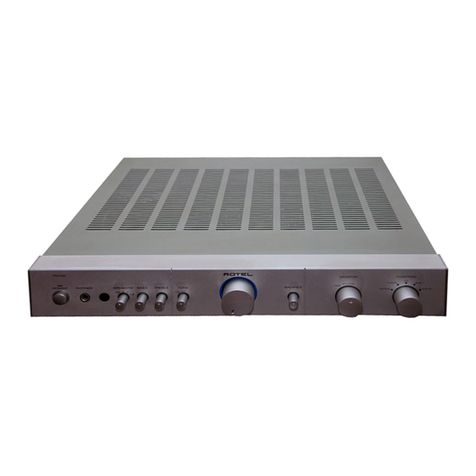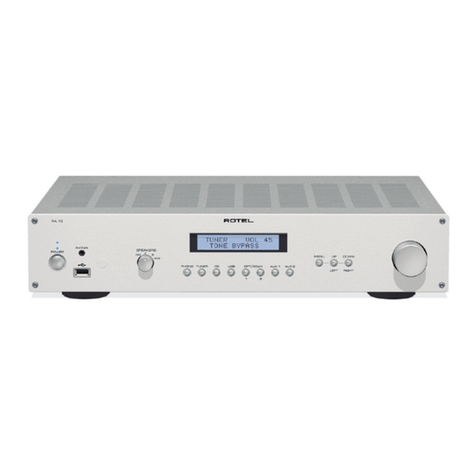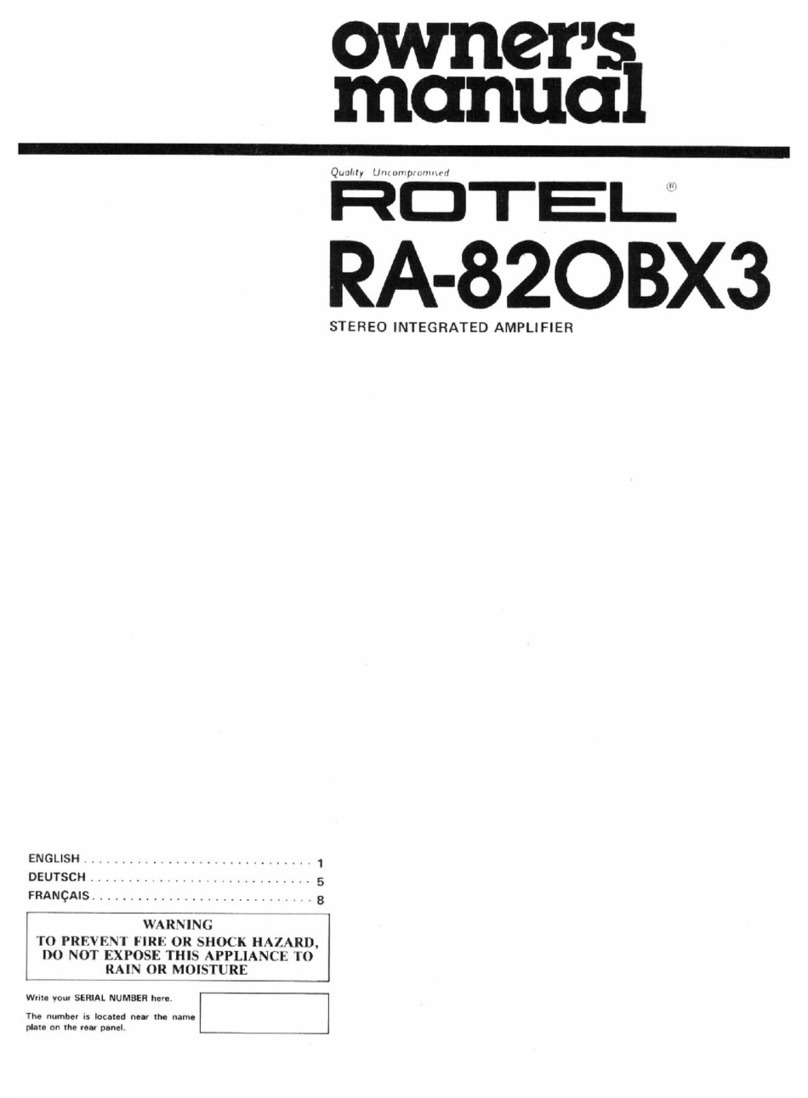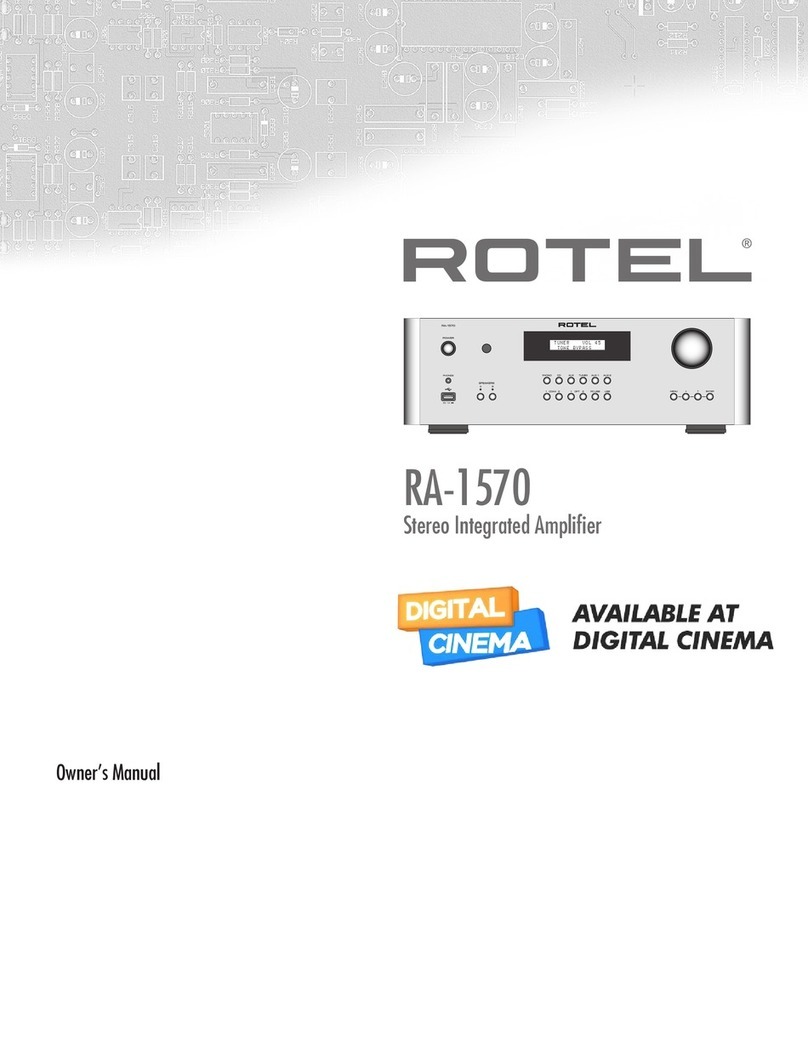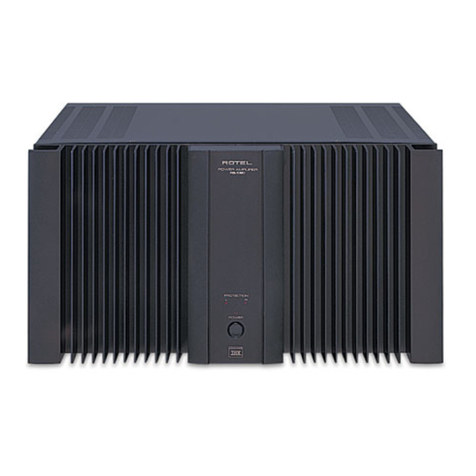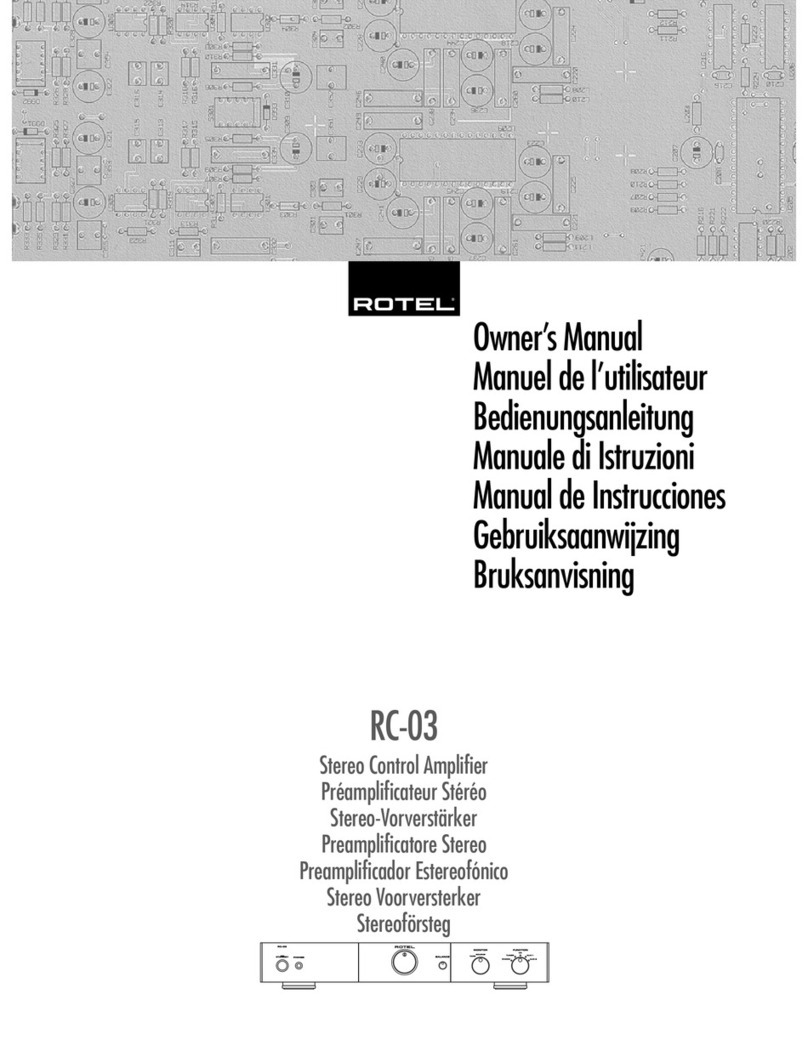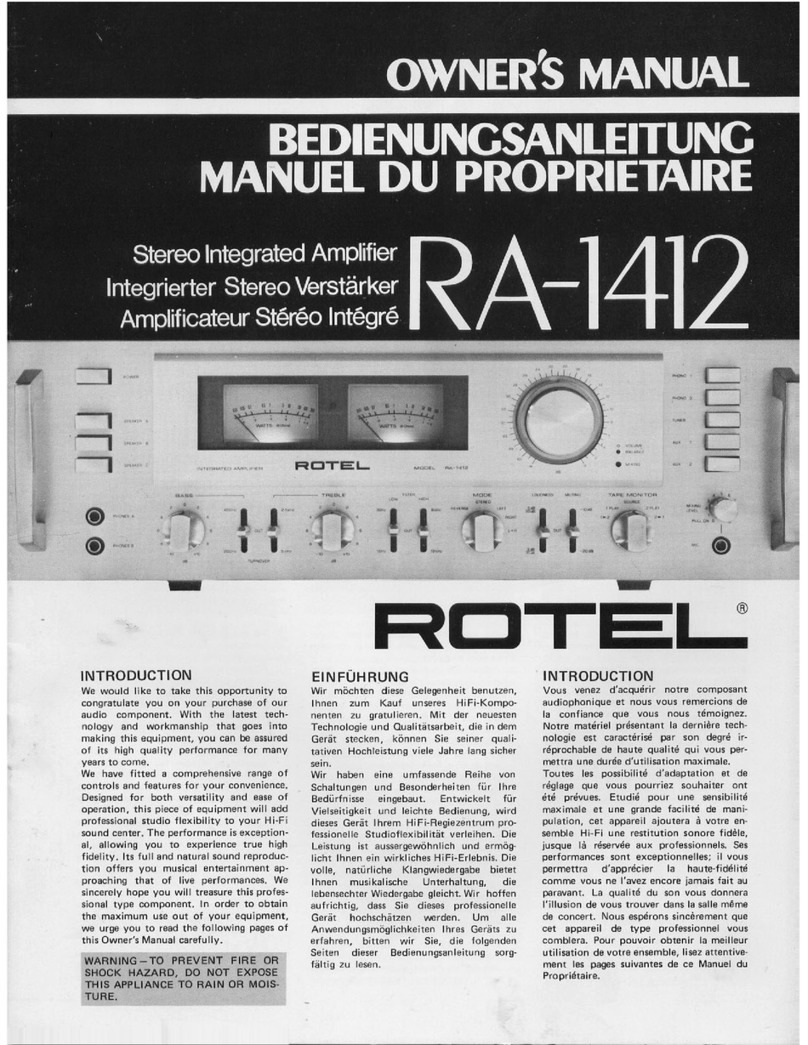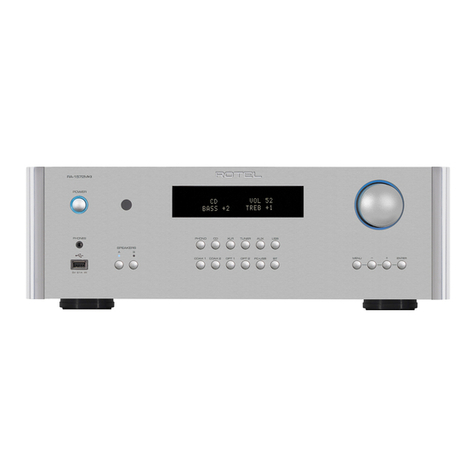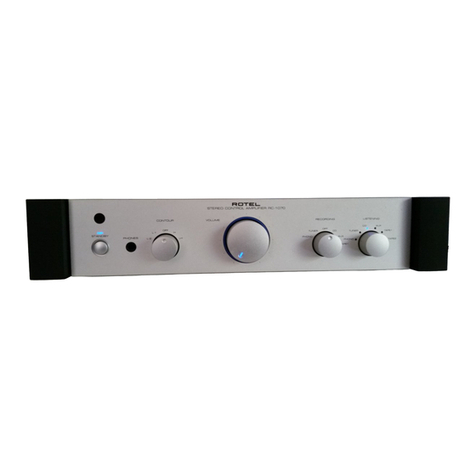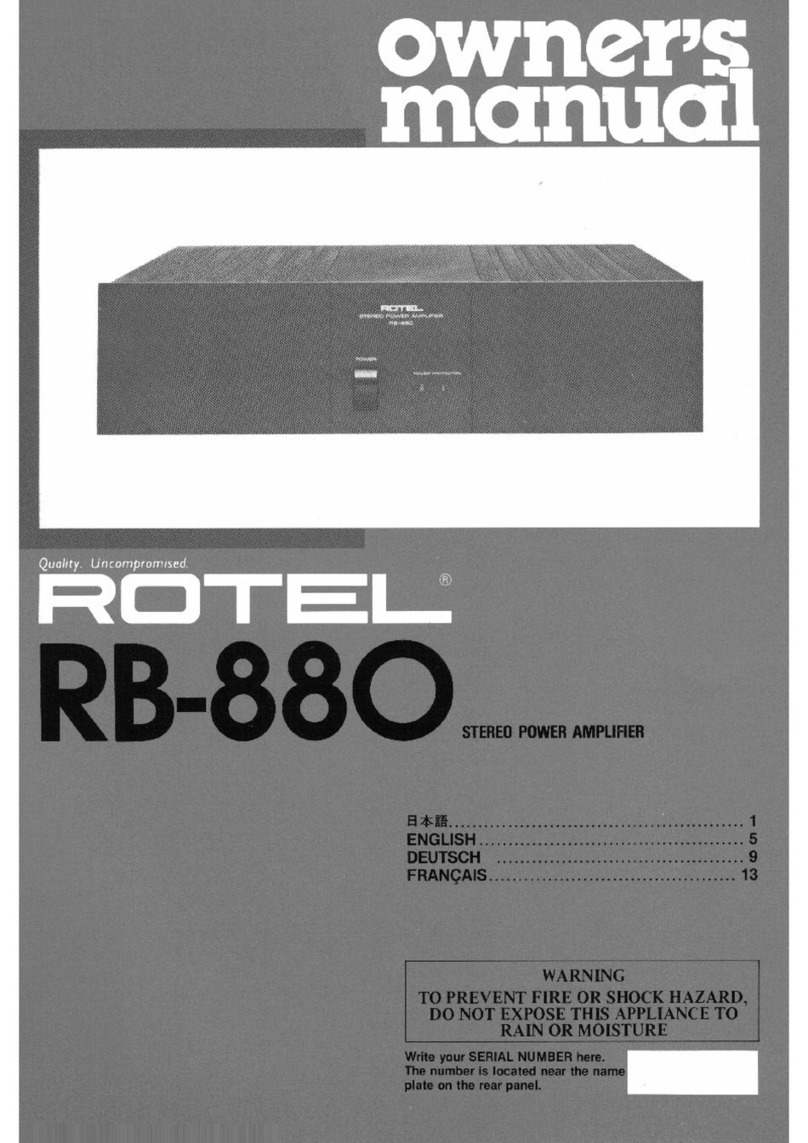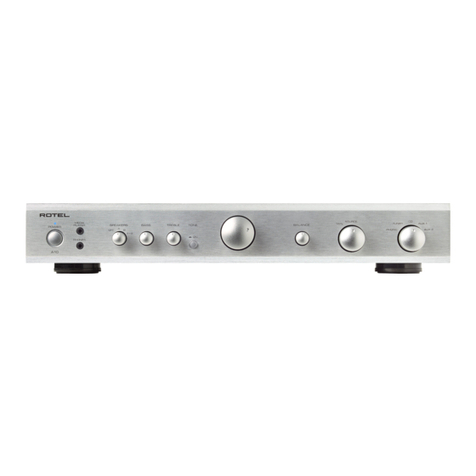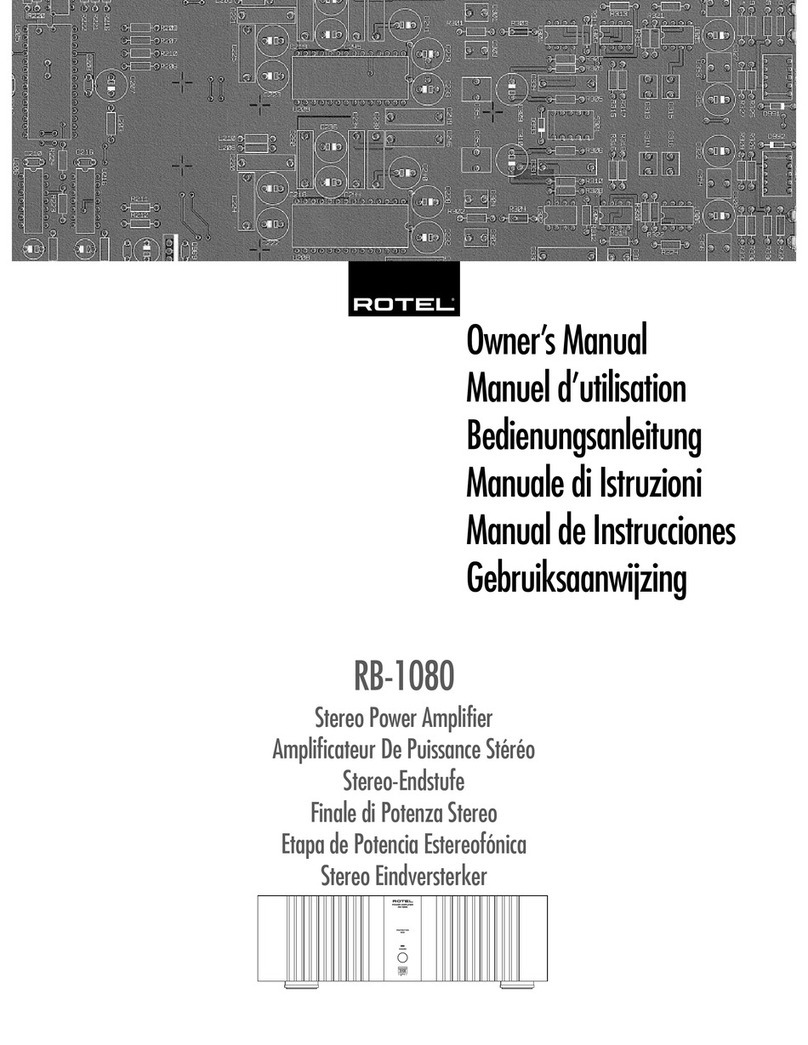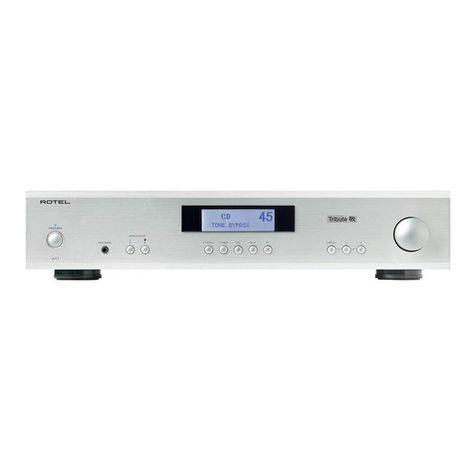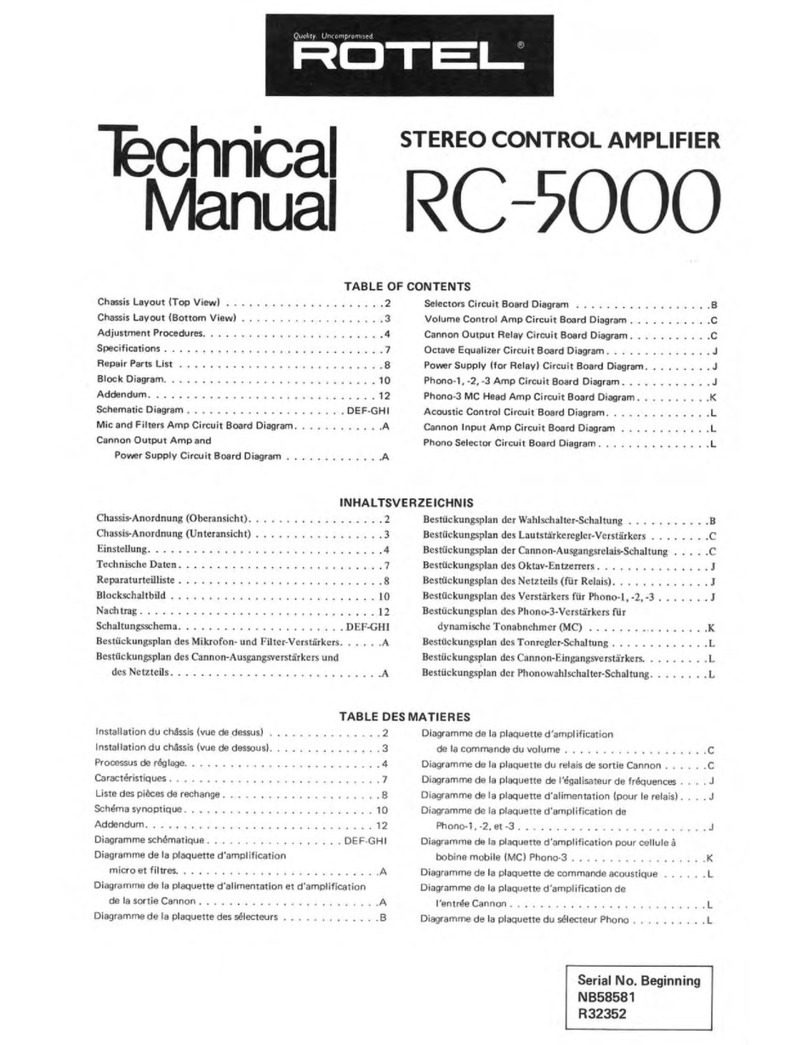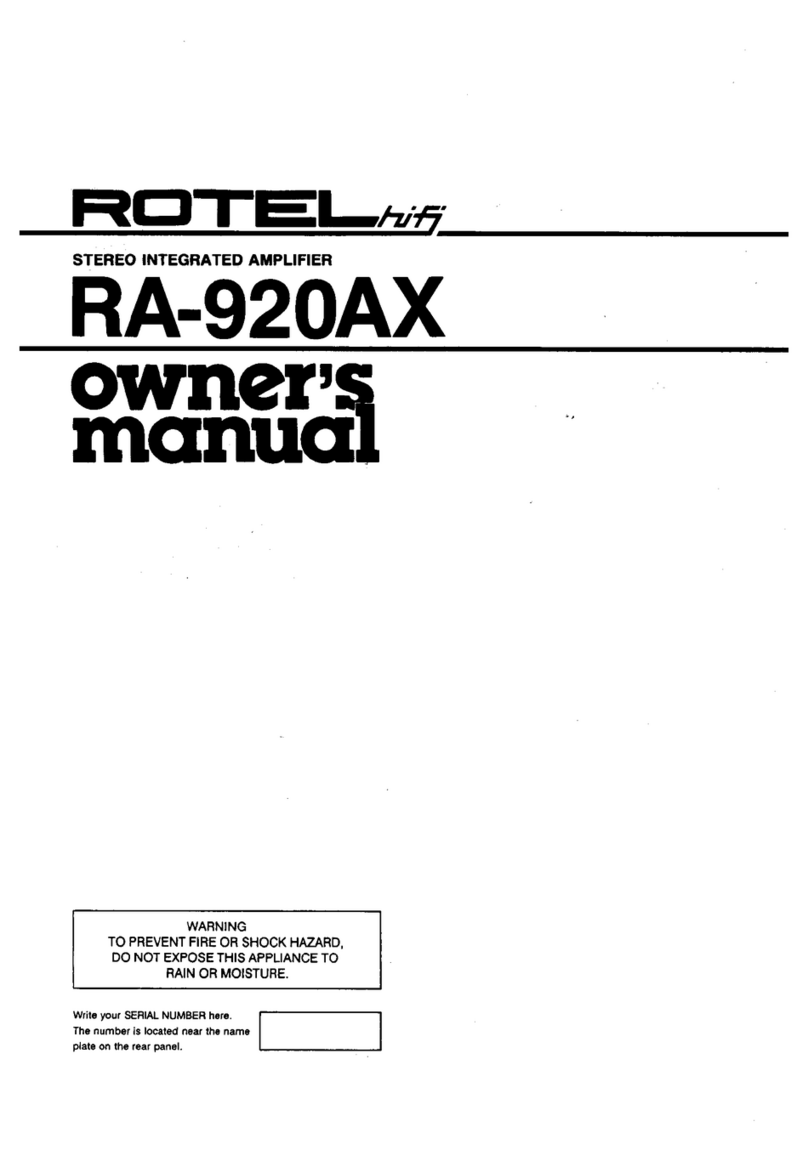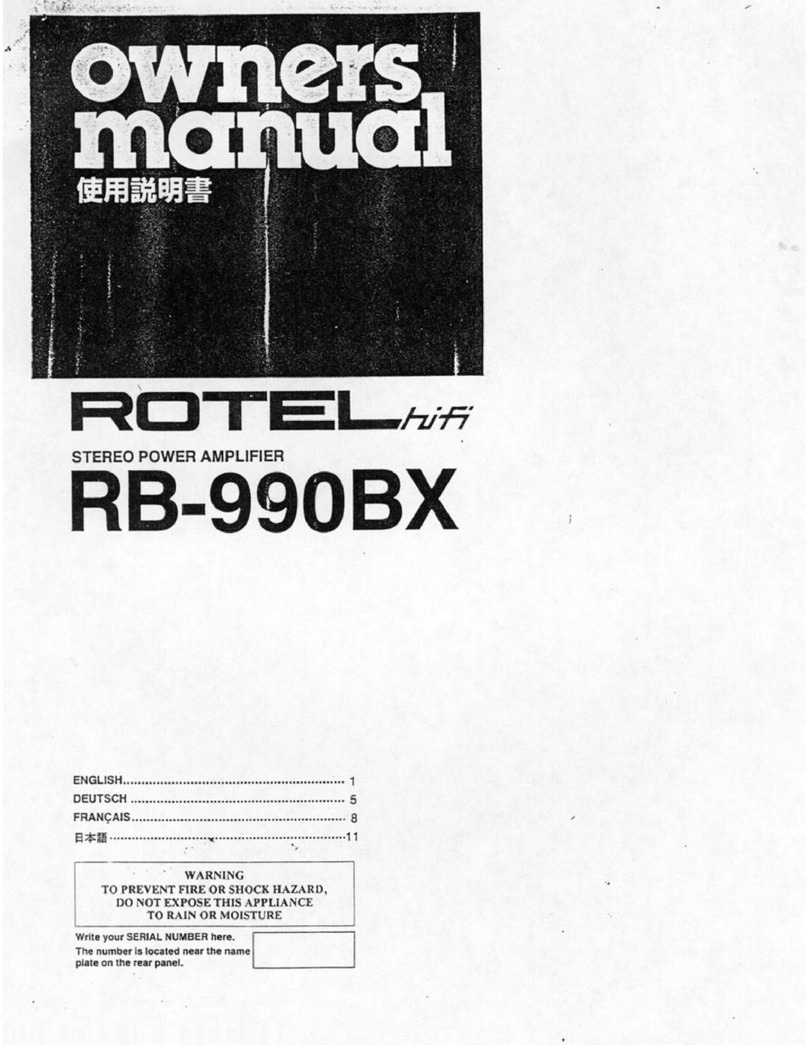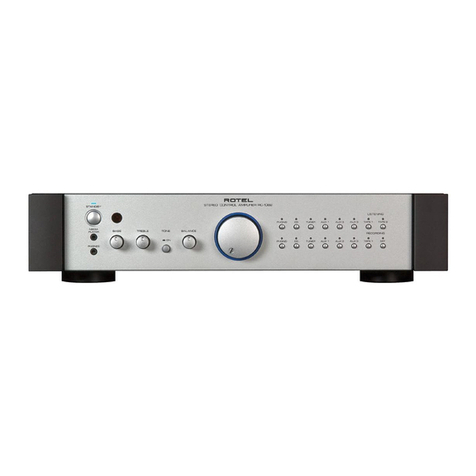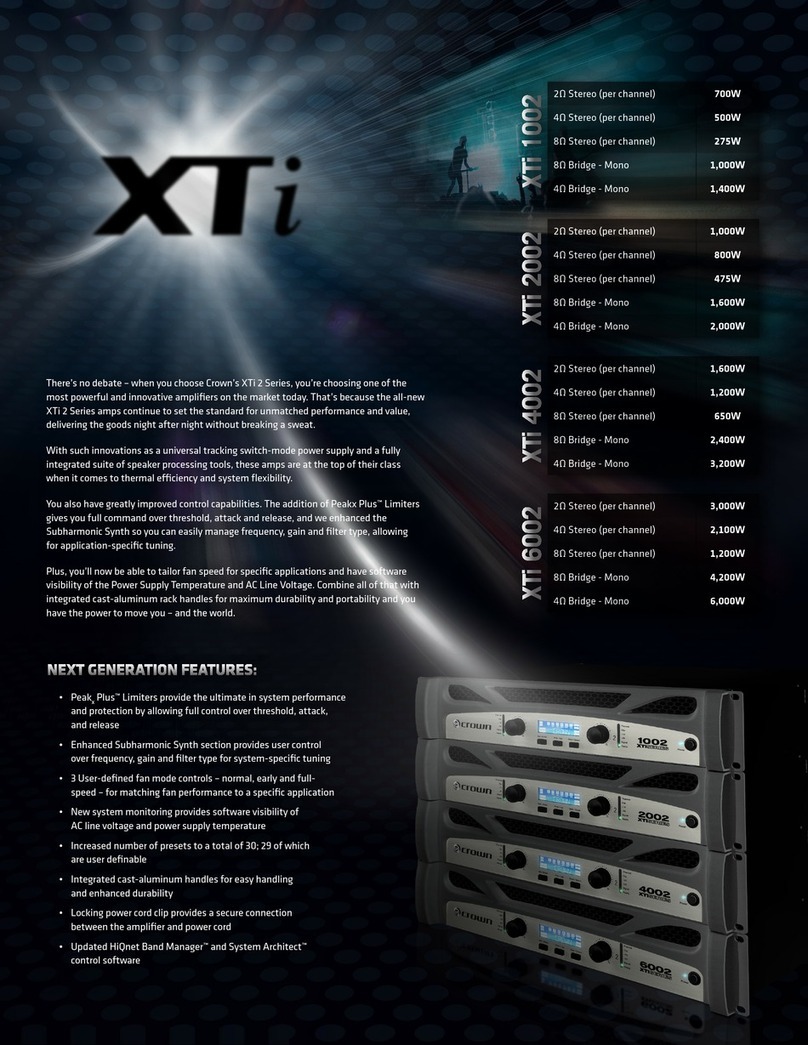
10 RC‑1570 Stereo Control Amplifier
A Few Precautions
WARNING: To avoid potential damage to your system, turn off ALL
the components in the system when connecting or disconnecting the
loudspeakers or any associated components. Do not turn the system
components back on until you are sure all the connections are correct
and secure. Pay particular attention to the speaker wires. There must
be no loose strands that could contact the other speaker wires, or the
chassis of the amplifier.
Please read this manual carefully. In addition to basic installation and
operating instructions, it provides valuable information on various RC-1570
system configurations as well as general information that will help you get
optimum performance from your system. Please contact your authorized
Rotel dealer for answers to any questions you might have. In addition, all
of us at Rotel welcome your questions and comments.
Save the RC-1570 shipping carton and all enclosed packing material for
future use. Shipping or moving the RC-1570 in anything other than the
original packing material may result in severe damage to your amplifier.
If included in the box please fill out and send in the owner’s registration
card. Also be sure to keep the original sales receipt. It is your best record
of the date of purchase, which you will need in the event warranty service
is ever required.
Placement
Like all audio components that handle low-level signals, the RC-1570 can
be affected by its environment. Avoid placing the RC-1570 on top of other
components. Also avoid routing audio signal cables near power cords. This
will minimize the chance it will pick up hum or interference.
We recommend installing the RC-1570 in furniture designed to house audio
components. Such furniture is designed to reduce or suppress vibration which
can adversely affect sound quality. Ask your authorized Rotel dealer for advice
about component furniture and proper installation of audio components.
The RC-1570 is supplied with an RR-AX92 remote control and must be
placed where the infrared signal from the remote can reach the front panel
Remote Sensor.
Cables
Be sure to keep the power cords, digital signal cables and regular audio
signal cables in your installation away from each other. This will minimize
the chance of the regular audio signal cables picking up noise or interference
from the power cords or digital cables. Using only high quality, shielded
cables will also help to prevent noise or interference from degrading the
sound quality of your system. If you have any questions see your authorized
Rotel dealer for advice about the best cable to use with your system.
The RR-AX92 Remote Control
Some functions can be done with either the front panel controls, or the
supplied RR-AX92 remote control. When these operations are described,
the square call out numbers refer to the main unit, while the encircled letters
refer to the remote control.
Second Amplifier Remote Code
The factory setting is remote code 1. If you find that the remote is conflicting
with other Rotel amplifiers, you can change to remote code 2 with the
following steps.
1. From the remote control press Tuner Jand 2 Gat the same time to set
the remote control to send Audio Code 2.
2. Point the remote at the unit and press 2 Gkey for 8 seconds. The unit
will show “Audio Custom Code 1 -> 2”.
3. Repeat the above procedure and press “1” key instead of “2” to change
the unit back to Code 1.
NOTE: The remote control can be used to operate the basic functions of
Rotel tuners and CD players. Remote control buttons labeled GHMN
can be used to operate CD or Tuner functions in your system. For the
remote control to operate properly, make sure both the remote control
and the CD or Tuner are both in same remote code, either Code 1 or
2. For more information please contact your authorized Rotel dealer.
Remote Control Batteries
Two UM-4/AAA size batteries (supplied) must be installed before the remote
control can be used. To install the batteries, remove the cover on the back of
the RR-AX92. Install the batteries as shown in the illustration in the battery
well. Test the control for proper operation, then replace the cover. When
the batteries become weak the remote control won’t operate the RC-1570
consistently. Installing fresh batteries should eliminate the problem.
AC Power and Control
AC Power Input u
Your RC-1570 is configured at the factory for the proper AC line voltage in
the country where you purchased it (either 120 volts AC or 230 volts AC
with a line frequency of either 50 Hz or 60 Hz). The AC line configuration
is noted on a decal on the back panel.
NOTE: Should you move your unit to another country, it may be possible
to reconfigure it for use on a different line voltage. Do not attempt to
perform this conversion yourself. Opening the enclosure of the unit
exposes you to dangerous voltages. Consult a qualified service person
or the Rotel factory service department for information.
NOTE: Some products are intended for sale in more than one country
and as such are supplied with more than one AC cord. Please only use
the one appropriate for your country/region.
The RC-1570 should be plugged directly into a 2-pin polarized wall outlet.
Do not use an extension cord. A heavy duty multi-tap power outlet strip may
be used if it (and the wall outlet) is rated to handle the current demanded
by the RC-1570 and all the other components connected to it.
If you are going to be away from home for an extended period of time
such as a month long vacation, it is a sensible precaution to unplug the RC-
1570 (as well as other audio and video components) while you are away.
POWER Switch and Power Indicator 1
Press the front panel Power Switch button to turn the unit on. The Power
Indicator light is illuminated when the unit is on. Press the Power Switch
button again to turn the unit off.
